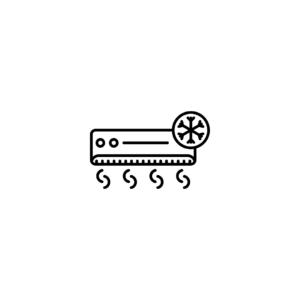Description
An Advanced Diploma in Editing and Sound Recording is aimed at individuals interested in the fields of audio production, editing, and sound design. This program provides students with the technical skills and creative insights needed to work in various areas of the audio and media industries, including film, television, music, and multimedia projects.
Course Details:
Duration: Typically 1 to 2 years, depending on the institution and the specific program structure.
Eligibility: Candidates usually need to have completed higher secondary education (12th grade) or possess a relevant qualification in media, music, or communication.
Mode of Study: Offered in full-time or part-time formats, often combining classroom instruction with hands-on practical training and projects.
Curriculum:
The curriculum for an Advanced Diploma in Editing and Sound Recording generally includes the following key areas:
1. Introduction to Audio Production
Overview of Sound:
Understanding the fundamentals of sound, including sound waves, frequency, amplitude, and acoustics.
Audio Equipment:
Familiarization with microphones, recording devices, mixers, and other essential audio equipment.
2. Sound Recording Techniques
Recording Techniques:
Techniques for capturing high-quality audio in various settings (studio, field recording, live events).
Microphone Placement:
Best practices for microphone selection and placement to achieve optimal sound quality.
3. Audio Editing Software
Digital Audio Workstations (DAWs):
Training in popular DAWs (e.g., Pro Tools, Adobe Audition, Logic Pro) for recording, editing, and mixing audio.
Editing Techniques:
Skills for editing audio tracks, including cutting, splicing, and applying audio effects.
4. Sound Design
Creating Soundscapes:
Techniques for designing and manipulating sound effects and ambience for various media formats.
Foley Art:
The art of creating sound effects synchronized with visual media, including techniques and best practices.
5. Mixing and Mastering
Mixing Techniques:
Understanding how to balance and blend audio tracks to create a cohesive sound mix.
Mastering Basics:
Introduction to mastering, the final step in the production process to make audio ready for distribution.
6. Music Production and Editing
Understanding Music Theory:
Basics of music theory relevant to audio editing and production, including rhythm, melody, and harmony.
Arranging and Compiling Tracks:
Skills for arranging music and compiling audio elements for final productions.
7. Audio Post-Production
Film and Television Sound:
Techniques for editing and sound design specific to film and television projects.
Dialogue Editing:
Skills for cleaning up and enhancing dialogue tracks for clarity and impact.
8. Broadcast and Live Sound
Live Sound Engineering:
Introduction to the principles of managing sound for live events, including mixing live audio and troubleshooting.
Broadcast Standards:
Understanding audio standards and practices for radio and television broadcasting.
9. Ambisonics and Surround Sound
3D Audio Techniques:
Exploration of spatial audio techniques, including ambisonics and surround sound mixing for immersive experiences.
Spatial Audio Applications:
Understanding the use of spatial audio in Virtual Reality (VR) and Augmented Reality (AR) environments.
10. Portfolio Development and Industry Practices
Creating a Professional Portfolio:
Guidance on assembling a portfolio showcasing audio projects and technical skills.
Industry Standards and Ethics:
Understanding professional practices, including copyright issues and ethical considerations in the audio industry.
11. Practical Training and Projects
Hands-On Experience:
Opportunities to work on real-life projects, including collaborative work with filmmakers, musicians, or media producers.
Capstone Project:
A final project that allows students to apply their skills in editing and sound recording, often involving a comprehensive audio project.
Assessment:
Assessment methods in this program may include:
Project Work:
Completion of practical assignments, including audio recordings, editing projects, and sound designs.
Written Assignments:
Research papers or critiques on audio technology, sound design practices, or industry trends.
Examinations:
Testing knowledge of audio theories, software applications, and technical practices.
Career Opportunities:
Graduates of the Advanced Diploma in Editing and Sound Recording can pursue various career paths, including:
Audio Engineer: Working in studios or live settings, responsible for recording and mixing sound.
Sound Designer: Creating sound effects and ambient sounds for film, television, video games, or theater.
Post-Production Editor: Editing audio tracks for film and television projects, including dialogue and sound effects.
Music Producer: Overseeing music recording sessions, guiding artists and musicians in the production process.
Broadcast Technician: Managing and operating audio equipment for radio and television broadcasts.
Freelance Sound Specialist: Offering specialized sound services for various projects, such as commercials, films, and events.
This advanced diploma program provides a solid foundation for individuals passionate about audio and sound production, enabling them to develop the technical skills and creative approaches necessary for success in the ever-evolving world of media. If you have any further questions or need more information, feel free to ask!









